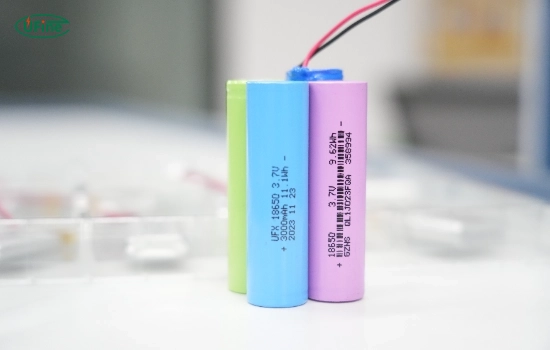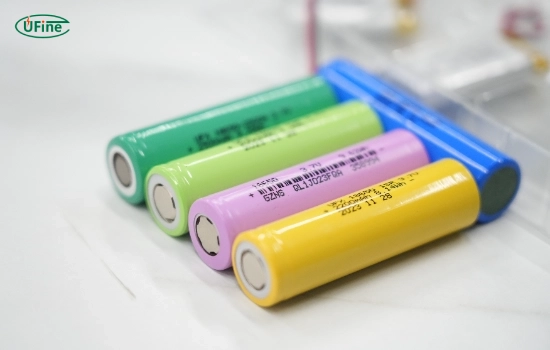How long do rechargeable vape batteries last? These batteries are crucial components of vaping devices, supplying the power needed for vapor production. Understanding their lifespan and the factors that influence it is vital for vapers. Whether you’re a casual user or a dedicated enthusiast, knowing how to care for your battery can significantly enhance your vaping experience. This article explores the lifespan of rechargeable vape batteries, the key factors that affect their longevity, and best practices for maintenance, ensuring you get the most out of your vaping device.
Part 1. Understanding rechargeable vape batteries
Rechargeable vape batteries are primarily lithium-ion batteries, known for their efficiency and longevity. These batteries come in various sizes, typically measured in milliampere-hours (mAh), which indicates their capacity. A higher mAh rating generally means a longer battery life, allowing for more extended use between charges.
When you vape, the battery powers the heating element, which vaporizes the e-liquid and produces the vapor that users inhale. The battery’s quality, capacity, and use determine its lifespan.
Part 2. Typical lifespan of vape batteries
On average, rechargeable vape batteries can last anywhere from 6 months to 2 years. This lifespan is contingent upon the number of charging cycles, which typically range from 300 to 500. After this point, users may notice a decline in performance, such as reduced vapor production or a shorter duration between charges.
Battery Cycle Explained
A battery cycle refers to charging a battery from 0% to 100% and then discharging it back to 0%. It’s important to note that partial discharges and recharges count toward this cycle. For example, if you use 50% of your battery and then recharge it, that counts as half a cycle. Understanding this concept can help you manage your battery usage more effectively.
Part 3. Factors affecting vape battery lifespan
Several factors can significantly influence the lifespan of rechargeable vape batteries:
Battery Quality
The quality of the battery is paramount. Higher-end devices often have better batteries designed to last longer and perform better. Cheaper batteries may not only have a shorter lifespan but can also pose safety risks.
Usage Habits
Your vaping habits can dramatically affect the life of your battery. Frequent users who take longer draws or use their devices at higher wattages will deplete their batteries faster than those who vape occasionally or take shorter puffs.
Environmental Conditions
Extreme temperatures can adversely affect battery performance. High heat can lead to battery swelling or leakage, while cold temperatures can reduce battery capacity and runtime. To maintain battery health, storing batteries in a stable environment is essential.
Charging Habits
Proper charging practices are crucial for extending battery life. Overcharging, using incorrect chargers, or leaving the device plugged in after it has been fully charged can lead to battery degradation. Always use the charger that came with your device or one recommended by the manufacturer.
Part 4. How does usage influence vape battery life?
The way you use your vape can have a significant impact on your battery’s lifespan. Here are some examples of how usage patterns can affect battery life:
- Frequent Use: Taking longer draws or using your device more often will drain the battery faster than occasional use.
- High-Wattage Settings: Using your device at higher wattage settings puts more strain on the battery, leading to quicker discharge.
- Constant Activation: Repeatedly pressing the fire button or activating the device can drain the battery more quickly.
Part 5. Signs your battery needs replacement
Recognizing when to replace your vape battery is crucial for optimal performance and safety. Here are some common signs that indicate it’s time for a new battery:
- Diminished Performance: If your device struggles to heat up or produce vapor, it might signal a weak battery.
- Reduced Runtime: If your battery drains faster than usual, it may be time for a replacement, even after a full charge.
- Physical Damage: Any signs of swelling, leaking, or other physical damage to the battery should prompt immediate replacement.
Part 6. How to extend the lifespan of your vape battery?
To maximize the lifespan of your rechargeable vape battery, consider the following tips:
- Avoid Overcharging: Always unplug your device to prevent damage once fully charged.
- Store Properly: Keep your battery in a cool, dry place, away from direct sunlight and extreme temperatures when not in use.
- Use Compatible Chargers: Always use the charger that came with your device or one specifically designed for your battery type.
- Maintain Cleanliness: Keep your battery connections clean and debris-free to ensure proper contact and charging.
Part 7. Vape battery charging best practices
Proper charging techniques can help extend the life of your vape battery. Follow these best practices:
- Use the Original Charger: A charger specifically designed for your device will ensure safe and efficient charging.
- Avoid Overnight Charging: Leaving your device plugged in overnight can lead to overcharging and reduced battery life.
- Monitor Charging: Monitor your device while it’s charging and unplug it once it’s fully charged.
Part 8. Common misconceptions about vape batteries
Users could improve several aspects of vape battery usage to avoid improper handling and maintenance. Here are a few:
- All Batteries Are the Same: Not all vape batteries are created equal. Different devices require different battery types, and using the wrong one can lead to performance issues or safety hazards.
- Batteries Last Forever: All rechargeable batteries have a finite lifespan and eventually need replacement, even though some may last longer.
- It’s Safe to Use a Damaged Battery: Using a damaged battery can be extremely dangerous. Always replace batteries that show signs of wear or damage.
Part 9. FAQs
-
How do I know when my vape battery is dead?
You might notice decreased vapor production, your device may not heat up, or the battery indicator light may show low or no charge. -
Can I use any charger for my vape battery?
No, it’s best to use the charger that came with your vape or one specifically designed for your battery type. Using incompatible chargers can be dangerous and may damage your battery. -
What happens if I overcharge my vape battery?
Overcharging can damage batteries, reduce lifespan, and sometimes create safety hazards like overheating or fire. -
How can I maintain my vape battery?
Regular cleaning of the battery connections, avoiding extreme temperatures, and following proper charging practices can help maintain your battery’s health and extend its lifespan. -
Is it safe to use a damaged battery?
No, using a damaged battery can be hazardous. Always replace damaged batteries immediately to avoid safety issues like overheating or fire.
Related Tags:
More Articles

Aluminum Air Battery Design: Materials, Assembly & Efficiency Tips
An aluminum air battery uses aluminum and air to generate power. Learn its materials, assembly steps, and tips to boost energy output and efficiency.
7 Advantages of a Heated Lithium Battery in Cold Climates
Looking to power batteries in freezing temps? Heated lithium batteries excel in cold climates. Here are 7 key benefits and how they work.
How to Choose the Best Floor Scrubber Battery for Commercial Cleaning?
Selecting the ideal floor scrubber battery ensures a long runtime, rapid charging, and minimal maintenance for efficient commercial cleaning operations.
Battery for Blower vs Battery for Leaf Vacuum: Which One Should You Choose?
Battery for blower vs leaf vacuum—learn the key differences in power, fit, and runtime to choose the right battery for your outdoor tool needs.
How to Choose the Right Battery for Blower?
Choosing the right blower battery? Consider voltage, capacity, chemistry & usage. This guide helps match the best battery for peak performance.





